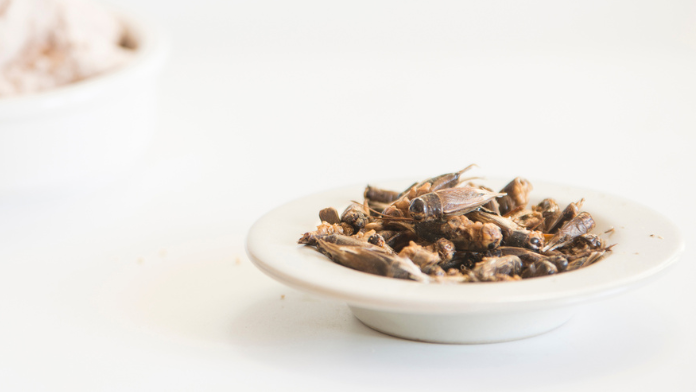The European Food Safety Authority (EFSA) defines i novel food, i.e. novel foods, as foods that were not consumed to a significant extent by humans in Europe before 1997. They can be innovative and newly developed foods produced using new technologies and production processes. As well as foods that are or have been traditionally eaten outside Europe. Insects and in particular the insects belong to this last category lesser mealworm and the grillo, authorized this January by EFSA. After flour moths not locusts, are the third and fourth insects that will be able to circulate on the tables of European citizens. But eight other requests are awaiting approval.
Even if someone raises doubts and questions of a sanitary and health-related nature about production methods and the very origin and traceability, EFSA reassures. On the website it can be read that “following a request from the company Ynsect NL BV on the minor mealworm and from the company Cricket One Co, Ltd. on the partially defatted powder obtained from the house cricket, both new foods have been subjected to rigorous scientific evaluations. Studies have concluded that they are safe.”
After the definitive green light from the European Commission, the interministerial decree presented on March 23 regulates the marketing and consumption of cricket flour, which is therefore preparing to arrive on the shelves of Italian supermarkets.
Where will we find the cricket flour
The Authority also explained that domestic cricket flour can be used in Bakery (bread, crackers, bread sticks), in the barrette to cereals, in dry premixes for bakery products, in biscotti, in sauces. But also in processed potato products, legume and vegetable dishes, in pizza, in the meat substitute products. In drinks like beer it’s us chocolate products.
Cricket flour: only 1 out of 10 Italians would try it
In most of Europe, including Italy, there is still little interest, almost distrust on the part of consumers for these new foods. A research conducted by EngageMinds HUB, the Research Center of the Catholic University of Cremona, directed by Professor Guendalina Graffignaconfirms that the Italians do not yet feel ready for this gastronomic innovation.
What emerges is that only just over 1 out of 10 Italians (15%) would be willing to bring foods made with cricket flour to the table. For at least half of Italians, on the other hand, it is an absolute no to this type of product. Furthermore, only 24% of the sample are in favor of the sale and 21% of the production of foods containing cricket flour. Among the interviewees a certain prevails hostility to the product (53%) and 68% say they feel disgust at the idea of consuming products made with cricket flour.
«Italians seem reluctant towards products with cricket flour: 47% of the sample believes that they can also put culinary traditions at risk», comments Graffigna. «Furthermore, the survey shows that 44% believe that the European Union should not have authorized its sale. These data are an expression of cultural barriers difficult to break down. Cricket flour is gaining interest as a sustainable source of protein, but it is a process that could still take some time to become more widespread and accepted in the Italian food culture».
Insects as an alternative to meat
However, the experts agree. Cricket, mealworms and locusts are to be considered an opportunity to expand the food portfolio, both for humans and animals. This must also be seen from the perspective of nutritional biodiversity, because the combination of new and old foods contributes to a varied, healthy and low environmental impact diet.
Among the reasons why Europe opens up to the commercialization of insects, there is in fact the need to find sources of alternative proteins to make the food system more sustainable. Within our Western diet they seem novelties without purpose. But for those people who follow a mainly vegetable diet, for ethical or health reasons, and are looking for protein more sustainable nutrients than those of meat, fish or eggs, can represent a valid alternative. After all, insects are rich in protein and nutrients. There are thousands of them in nature. To hypothesize one production chain must be identified more easily farmed species. In Italy they would be the mealworm, the cricket and the silkworm.
Insects and the environment
According to the Food and Agriculture Organization of the United Nations (FAO), insects as food emerge as a particularly relevant issue in the twenty-first century due to the rising cost of animal proteins, food insecurity, of environmental pressures, population growth, and growing demand for protein among the middle classes. Therefore, it is necessary to find alternative solutions to conventional livestock. The consumption of insects therefore contributes positively to the environmentat the salute and al sustenance. Even the Fao indicates insects as a source of highly nutritious and healthy food with a excellent fat, protein, vitamin, fiber and mineral content. Therefore, they are an alternative protein source that facilitates the transition to healthy and sustainable diets.

